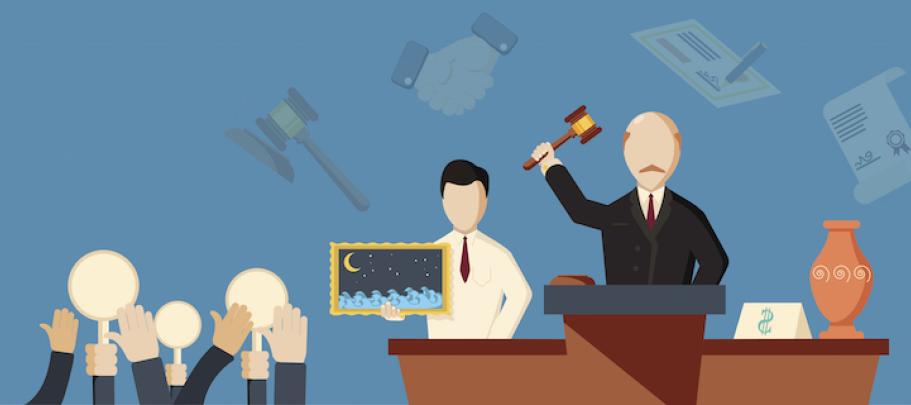
Here’s the problem with conducting a town hall meeting where some employees gather in person and others join remotely: Remote employees have an inferior experience, especially when it comes to participation.
As one client told me recently: “Our CEO is very interested in engaging with employees. But he naturally focuses on people he can see in the room. It’s hard to get him to pay attention to questions coming in over chat when he can see someone’s hand being raised in the audience.”
I’ve got many ideas about how to solve this and other town hall challenges but right now I’d like to share a simple way to increase participation.
To demonstrate, we need to take a trip to an art sale, like the kind hosted by top auction houses like Christie’s and Sotheby’s.
Even if you’ve never been to a fine-art auction in person, you know how they work from watching movies or TV shows.
Some potential buyers gather in the auction house’s showroom; others call in. The auctioneer invites someone to start the bidding. After an initial bid, buyers in the room raise their hands or shout out higher bids; auction house employees make bids for buyers on the phone. Finally, the auctioneer indicates that he has a winning bid and strikes his hammer down to indicate the auction is over.
Here’s the key: Remote buyers have as much opportunity to bid as those in the showroom. (In fact, the anonymous buyer on the phone often wins the multi-million dollar prize.)
So how do you replicate that everyone-is-equal experience in employee town halls? Assign facilitators to manage remote employees’ questions and comments.
It works like this:
- You assign a facilitator to manage each remote location—and a partner facilitator who sits in the main location (where the leader is). (That’s right: There are two facilitators to serve as a bridge between each location and the center.)
- The remote facilitator is responsible for collecting employees’ questions and comments—and feeding them to his or her partner facilitator via chat, text or email.
- An additional facilitator monitors employees joining from their individual desks, who ask questions or comment via a dedicated chat window.
- During the interactive portion of the town hall, each facilitator in the room has several chances to raise his or her hand and ask a question or make a comment on behalf of his or her assigned location. (Each facilitator knows to make reference to the location: “I have a question from our facility in Budapest . . .”)
- The leader, who has been briefed ahead of time, knows to give equal time to employees in the room and to facilitators representing those not in the room.
This technique takes coordination, for sure. But it immediately changes the dynamic so remote employees don’t feel like voyeurs, peering in at the town hall but not having a chance to join the party.




